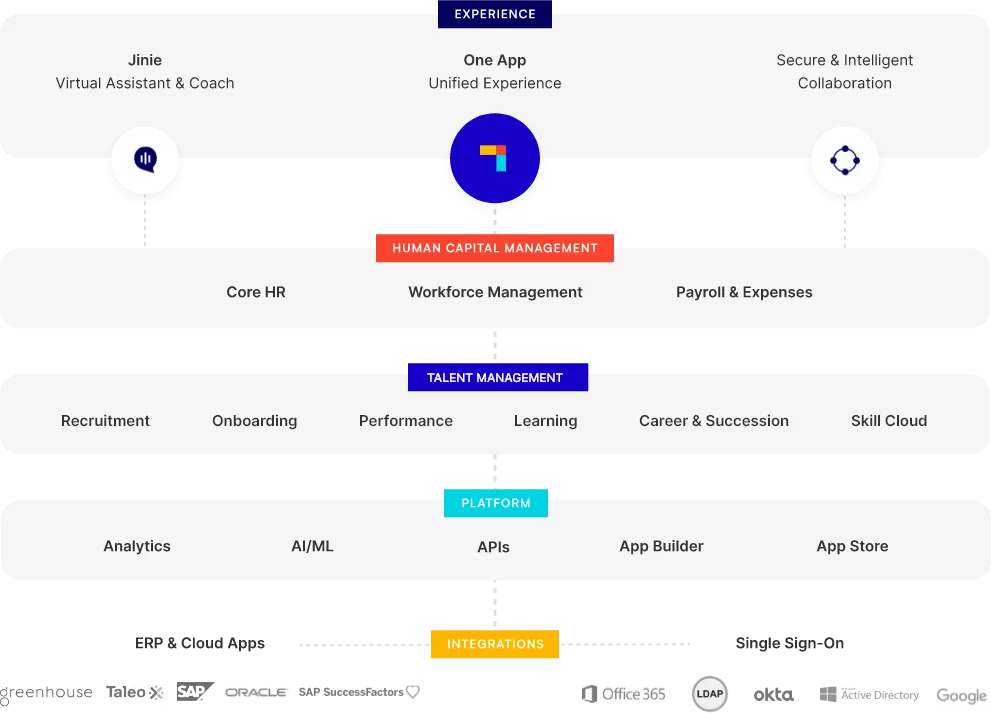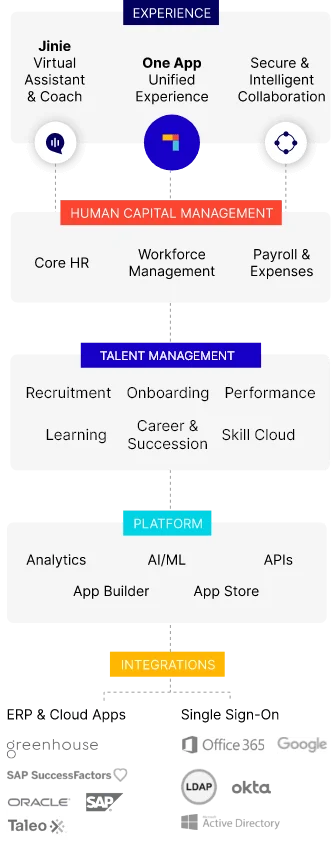The Middle East is experiencing a significant economic shift. This transformation goes beyond oil, encompassing industries like electric vehicles, industrial equipment, chemicals, metals, plastics, and more. Companies are actively investing in training and retraining their workforce (upskilling and reskilling) to meet the demands of this new economy, and we’re seeing an increase in the movement of skilled workers across borders (global talent flows).
Organisations that will reap the rewards of this environment are those that will successfully execute strategies and achieve their vision for growth. This means that strategic performance management is more important than ever before.
Strategic performance management provides clear performance metrics and fosters a culture of continuous improvement. It can boost productivity, drive growth, and maintain a competitive edge.
Let us explore the elements of strategic performance management and how to implement it.
The Significance of Strategic Performance Management in the Middle East
Strategic performance management isn’t just about evaluating employees. It’s a powerful tool to align individual efforts with organisational goals.
This are many reasons why this approach will drive long-term success for companies in the Middle East. Some of them are:
- Enhanced Growth: Strategic performance management clarifies goals and ensures that everyone is working towards the same objectives. This focus translates to efficient operations and improved productivity.
- Sharpened Competitiveness: In today’s competitive Middle Eastern market, businesses need to empower their workforce to perform at their best. Strategic performance management offers a powerful tool to achieve this.
- A Culture of Excellence: Regular performance reviews with clear feedback foster a culture of continuous learning and development, resulting in a more innovative and high-performing workplace.
- Attract and Retain Top Talent: Performance management shows that the company is committed to employee growth. A transparent and fair performance management system becomes a magnet for top talent across the Middle East.
Key Components of Strategic Performance Management in the Middle East
The dynamic business landscape of the Middle East demands a focus on agility and continuous improvement. Here’s how strategic performance management can be tailored for success.
Aligned Goals and Localisation
Clearly define the organisation’s long-term vision, considering the specific market dynamics and cultural nuances of the Middle East. Translate this vision into localised and relevant department and team objectives. This ensures a unified direction with a strong understanding of how each piece contributes to the overall strategy.

Culturally Sensitive KPIs
Develop clear, measurable, and relevant KPIs for the Middle Eastern context. Consider factors like employee loyalty and long-term commitment alongside traditional performance metrics. This ensures a holistic view of performance that aligns with regional business values.
Continuous Feedback and Development
Establish a system for regular performance reviews that incorporate both formal and informal feedback channels. Avoid the mistakes of traditional performance management goal setting. Tailor feedback styles to be culturally appropriate, fostering open communication and employee development. This empowers employees to learn, adapt, and excel within the Middle Eastern work environment.

Investment in Learning and Innovation
Implement strategies for continuous learning and development specific to the needs of the Middle Eastern workforce. Encourage innovation by fostering a culture of knowledge sharing and adaptation. This equips employees with the skills and mindset to thrive in the ever-evolving market.
Implementing a Successful Strategic Performance Management Plan in the Middle East
The best type of strategic performance management plan for the Middle East will prioritise agility, cultural sensitivity, and continuous learning.
Here’s a roadmap to tailor implementation for success.
Step 1: Assess and Align Performance Gaps
Evaluate current performance across departments, considering the cultural context. Benchmark against industry leaders in the Middle East to identify gaps. Analyse these gaps to pinpoint areas where performance falls short of strategic goals. Investigate the root causes, considering factors like cultural nuances, resource constraints, and skill shortages.
Step 2: Set SMART Goals with a Regional Focus
Define clear, measurable goals for the organisation, departments, and teams, ensuring alignment with the overall strategy. Emphasise SMART goals but with an added layer of relevance.
- Specific: Consider cultural expectations and market dynamics when defining goals.
- Measurable: Use metrics that reflect business values alongside traditional performance measures.
- Achievable: Set goals that are challenging but attainable within the Middle Eastern context.
- Relevant: Ensure goals directly contribute to long-term success in the specific market.
- Time-bound: Maintain a sense of urgency with clear deadlines.

Step 3: Leverage Technology for Regional Hiring Needs
Implement performance management tools and systems with software suited to the Middle Eastern workforce. Consider a comprehensive, new-age SaaS platform like PeopleStrong. PeopleStrong tailors its technology to the specific needs and regulations of the Asia-Pacific area, including the Middle East. This ensures compliance and a better fit for local businesses.
Explore options for:
- Goal Setting Tools: Facilitate the creation and tracking of SMART goals at all levels, with features that cater to local languages and cultural preferences.
- Performance Tracking: Utilise real-time data collection reflecting local business practices.
- Feedback Management: Implement platforms that enable culturally appropriate and continuous feedback, supporting performance reviews and development plans.
- Data Analysis: Leverage tools with a focus on trends and insights specific to the Middle East market.
Step 4: Foster Effective Communication
Ensure all employees understand the goals, expectations, measurement methods, and their role in achieving success. Implement a culturally sensitive communication strategy. The strategy should encompass:
- Clear Communication: Present the plan in a clear and understandable manner, utilising diverse communication channels that resonate with the regional workforce. Consider local languages and preferred communication styles.
- Training and Workshops: Conduct training sessions tailored to the Middle Eastern context, educating employees on the process, tools, and their individual roles within the framework.
- Feedback Mechanisms: Create avenues for open communication, allowing employees to ask questions, provide feedback, and share specific concerns related to implementation.
- Ongoing Updates: Keep employees informed about any changes to the plan, progress towards goals, and adjustments made based on feedback and market shifts.
Step 5: Continuous Improvement
Regularly track progress towards goals, analyse data from KPIs and metrics, and identify areas for improvement. These can focus on:
- Regular Reviews: Schedule performance reviews at individual, team, and organisational levels, with a focus on regional considerations.
- Data Analysis: Continuously analyse performance data to detect trends, patterns, and areas needing attention within the Middle Eastern context.
- Adjustments and Adaptations: Be prepared to adjust goals, strategies, and action plans based on performance data, changing market dynamics, and cultural nuances.
- Recognition and Rewards: Recognise and reward achievements to motivate employees and reinforce positive performance behaviour within the context.
- Continuous Improvement: Foster a culture of continuous learning and innovation across the organisation, encouraging feedback and adaptation to thrive.
By incorporating these considerations and matching them with the right design thinking, your performance plan will be positioned to drive success in the Middle East’s business environment.
The Way Ahead: Strategic Performance Success in the Middle East
The Middle East’s economic transformation presents exciting opportunities for businesses. Strategic performance management is the key to unlocking this potential.
It ensures everyone is aligned with the organisation’s vision, fosters continuous improvement, and drives long-term growth. By creating a culture of excellence and continuous learning, it attracts top talent.
Aligning goals with market dynamics and cultural nuances is important from the start. Develop culturally sensitive KPIs, implement continuous feedback, and invest in learning and innovation specific to the Middle Eastern workforce.
Establish a culture of continuous improvement through regular reviews, data analysis, and fine-tuning in the long run.
By following these steps, your performance management plan will be well-equipped to propel your organisation to success in the Middle East. To find out more, get in touch with the experts at PeopleStrong.
FAQs
What should you consider when implementing strategic performance management in the Middle East?
While the core principles of remain the same, there are some key considerations for the Middle East. Feedback styles and communication approaches need to be adapted to regional norms. Strategic objectives should be aligned with the specific market dynamics and business values. Feedback mechanisms should consider employee loyalty and long-term commitment alongside traditional performance metrics.
What are the biggest challenges of implementing strategic performance management in the Middle East?
Pay attention to collaboration and information sharing across departments. Communication needs to be clear and accessible for a diverse workforce that speaks various languages. The Middle Eastern market requires a flexible and adaptable approach.
How can technology support strategic performance management in the Middle East?
Technology can play a crucial role in streamlining processes:
- Localised Platforms: Utilise software with features catering to local languages and cultural preferences.
- Real-time Data Collection: Implement systems that track performance metrics relevant to the Middle Eastern context.
- Continuous Feedback Tools: Consider platforms that enable culturally appropriate feedback and development plans.










